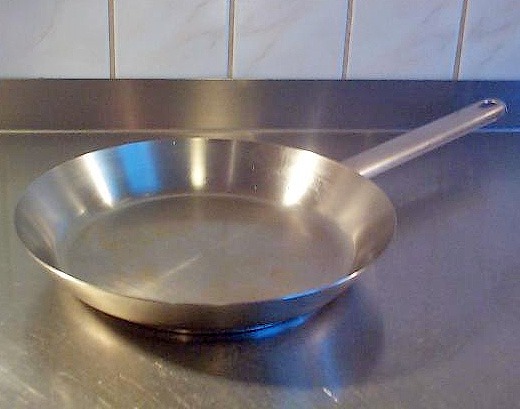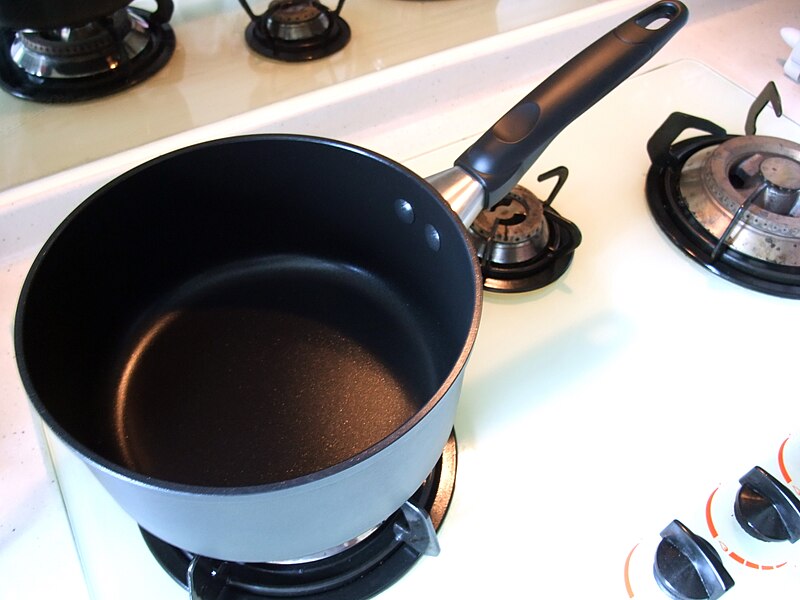We consider the kitchen as the heart of every home. It is a place where memories are created and quality time is shared. It is part of the household where culinary dishes come to life.
Further, behind every masterpiece dish stands a collection of tools and utensils that transformed ingredients into culinary art. Among the most crucial elements in any kitchen is the cookware. From pots to simmering saucepans, your cookware collection is the backbone of your culinary adventures. Investing in the best quality cookware set can significantly impact your culinary skills and make your time in the kitchen more enjoyable. Let’s choose the right cookware tailored to your needs and personal preferences.
1. Cast Iron Pans
Cast iron pots are highly durable. Plus, cast iron is less conductive than stainless or copper, making it slower to heat up. This is ideal for keeping hot food on the table a little longer. It can withstand high temperatures without deformation. But once heated, it has a fantastic ability to retain heat. There is virtually no risk of this cookware overheating other than the need for additional seasoning.
Cast iron is an excellent product for those passionate about cooking who want to own and maintain durable cookware that can provide meals for many lifetimes. They can make great steaks with some butter and fresh herbs added to the mix. And even cornbread dough can be easily poured into a nice hot skillet for long cooking over the coals or at home in the oven.
Size
Cast iron pan sizes range from 3.5 inches to 17 inches. Pans come in different shapes with bottom and top sides, which means the size of the pan is also different. Each size cast iron pan has its uses.
The most popular size cast iron skillet is the 10-inch. Typically, 8-inch, 10-inch, and 12-inch stoves are the average-sized cast-iron pans in households as they fit within the standard size range and are suitable for single people, couples, and families.
2. Stockpot
This large, deep pot has straight sides and a flat bottom. They’re great for making pasta because of their height, and they’re also great for cooking liquid meals that don’t require being near a heat source. They usually have tight lids, which is convenient when cooking broth.
Size
Stockpots come in various sizes but are typically larger than regular saucepans or Dutch ovens. Typical sizes range from 8 to 20 quarts but can be larger for commercial use. Further, collecting stockpots for the future making of stocks and broths is perfect. They are ideal for simmering bones, vegetables, and seasonings to create flavorful bases for soups and sauces.
3. Frying Pan
Frying pans have rounded or sloping edges and are shallower than saute pans. They are ideal for stir-frying at high temperatures because you only need to insert a spoon to stir the ingredients. They rarely have a lid. It is typically made of metal, with a flat, used for various cooking techniques, including frying, sautéing, searing, and baking.
Size
The most common sizes for frying pans are typically measured in inches or centimeters and can range from small to large. For small frying pan, size ranges from 6-8 inches (15-20 cm), which is perfect for frying eggs, toasting nuts, or sautéing a small amount of vegetables.
The medium frying pan is 10-12 inches (25-30 cm). This type of pan is suitable for most everyday cooking tasks, such as cooking pancakes, searing meat, or making stir-fries. Meanwhile, a large frying pan with a diameter of 18 inches (45 cm) or more is typically used in commercial kitchens or for cooking large quantities of food.
4. Saute Pan
A sauté pan is similar to a frying pan, except a sauté pan has straight edges instead of rounded edges. They are also small and have a flat bottom, but are deeper than a frying pan and have a lid. Sauté pans usually have a flat bottom and straight sides. The straight sides allow for easy tossing and flipping of food. They are mainly used for stir-fry dishes but also to make sauces.
Sauté pans can be made from various materials, including stainless steel, nonstick, cast iron, or copper. Remember that the quality of the material you choose will affect how evenly the pan distributes heat and how well it retains heat.
Sizes
Saute pans come in various sizes, typically 8 to 12 inches in diameter. The size you will choose depends on the quantity of dish you plan to cook. Selecting a 12-14 diameter saute pan is ideal if you have a family of three to four. Smaller than twelve inches is the best choice for one to two people.
5. Saucepan
Saucepans are cooking utensils loved by many people because of their versatility. They are ideal for reheating leftovers, cooking pasta, making sauces and soups, cooking cereals, and even boiling eggs. The design of the saucepan is simple but effective. It is usually a round, deep container with a long handle and a lid. The long handle offers a secure grip, while the cover helps retain heat and moisture.
Sizes
The size of the saucepan can significantly impact the cooking process and the overall outcome of the dish. It is essential to understand the different sizes available and how they can be used to optimize your cooking experience. Smaller saucepans are great for heating or reheating small quantities of food or liquids, while larger ones are suitable for making soups and stews.
6. Braising Pan
A kitchen braising pan, often referred to simply as a braising pan or braiser, is a versatile and essential cookware in many kitchens. It has a deep, wide, shallow pan with a flat bottom. It has two loop handles and a locking lid to lock out moisture. Because of their size, Braising pans are suitable for large meats like chicken or beef. They can also be used to cook food in the oven gently. Some braising pans can be used for both cooking and serving.
Sizes
Small braising pans are suitable for single servings or small portions. They are great for braising a single chicken thigh or pork chops. Meanwhile, braise a whole chicken or a few pieces of meat and vegetables in a medium-sized pan. Large-size braising pans are ideal for family dinners or larger gatherings. You can use a large braising pan to prepare a pot roast or a larger quantity of stew.
Best Materials for Cookware Kitchen Sets
The materials used in constructing cookware sets are crucial in determining their performance and durability. Factors such as heat conductivity, durability, non-reactivity with food, and ease of maintenance must always be considered.
1. Nonstick Cookware
Nonstick cookware is perfect for eggs and other delicate foods. While nonstick cookware isn’t necessary in the kitchen, it can reduce the need to use large amounts of cooking oil and save you the frustration of stuck food. However, it is unsuitable for high-heat cooking, as it can release toxic fumes if overheated. Nonstick coatings work best as frying pans, sauté pans, grills, or works, and they are often made of stainless steel, an excellent material for induction cookers.
2. Hard-Anodized Aluminum Cookware
They are made by oxidizing aluminum to a very high degree, where the oxidation extends several millimeters into the metal itself. This makes aluminum non-reactive with acids and alkaline ingredients, such as citrus fruits, dairy products, etc.
Further, many hard-anodized cookware pieces come with a nonstick coating, enhancing their cooking performance and making them easier to clean. This nonstick coating is typically more durable than traditional nonstick coatings.
3. Enamel Cast-Iron Cookware
This classic cookware is made by coating cast iron with an enamel layer, creating a smooth, nonstick surface that is easy to clean and maintain. Although this cookware is not dishwasher safe, enamel pots are ideal for baking sourdough and work great on induction stovetops. Unlike regular cast iron, enamel does not form a seasoning that creates a nonstick coating, so eggs and other sticky foods require more care and heat management.
4. Stainless-Steel Cookware
Stainless steel pots and pans look great, are very durable, and have handles that generally stay cool to the touch (except for the lid handle). For this reason, they are often easier and safer to operate than cast iron.
Another benefit of stainless-steel cookware is its versatility. It can be used on different heat sources, including gas, electric, and induction stovetops. This makes it a practical choice for any kitchen, regardless of your stove type.
Conclusion
The variety, sizes, and quality of your cookware can significantly impact the quality of your culinary creations. Any cooking journey needs an investment in the essential kitchen cookware—a recipe for success behind every creative chef.



